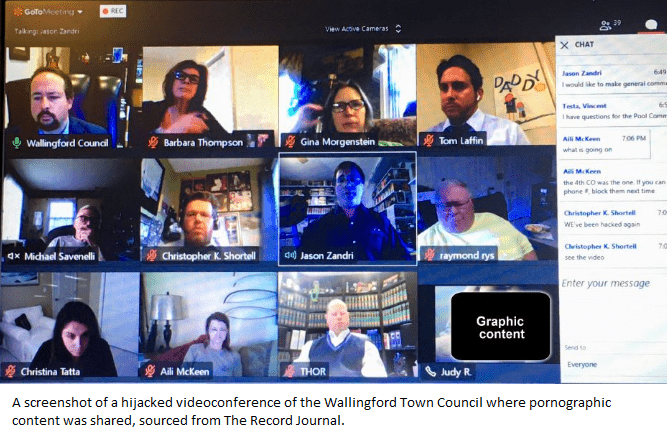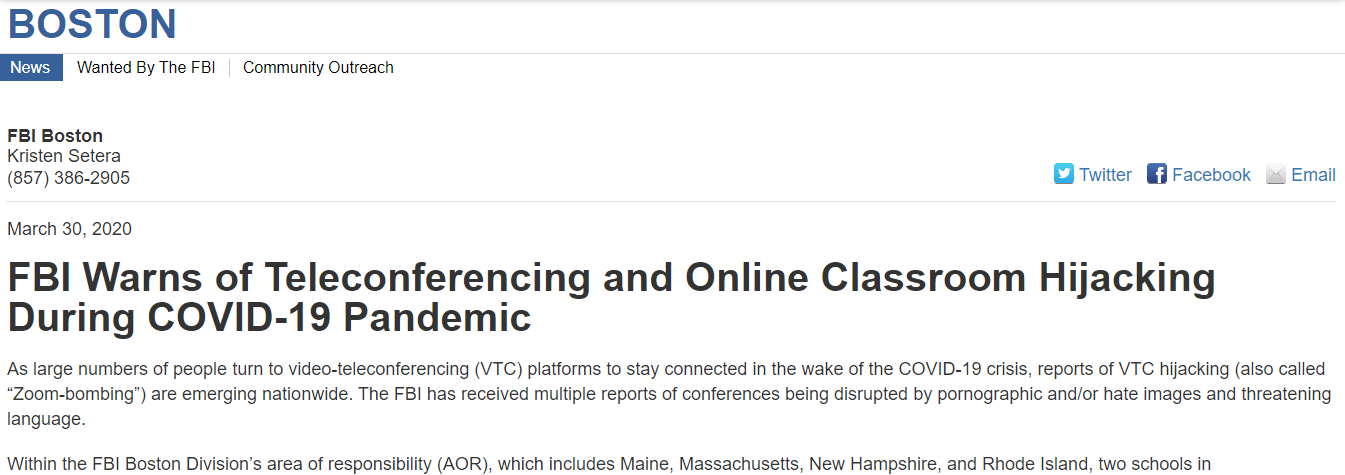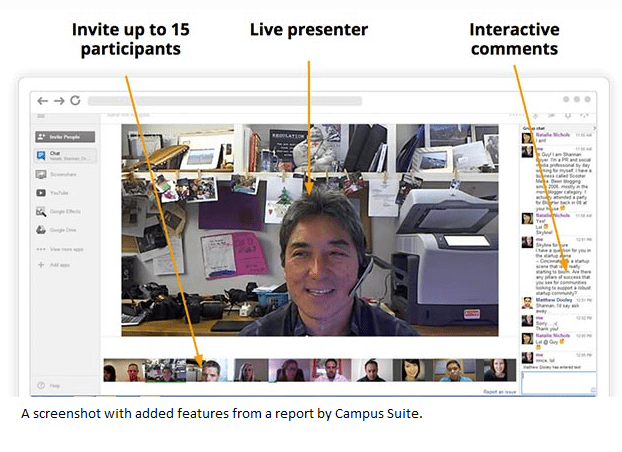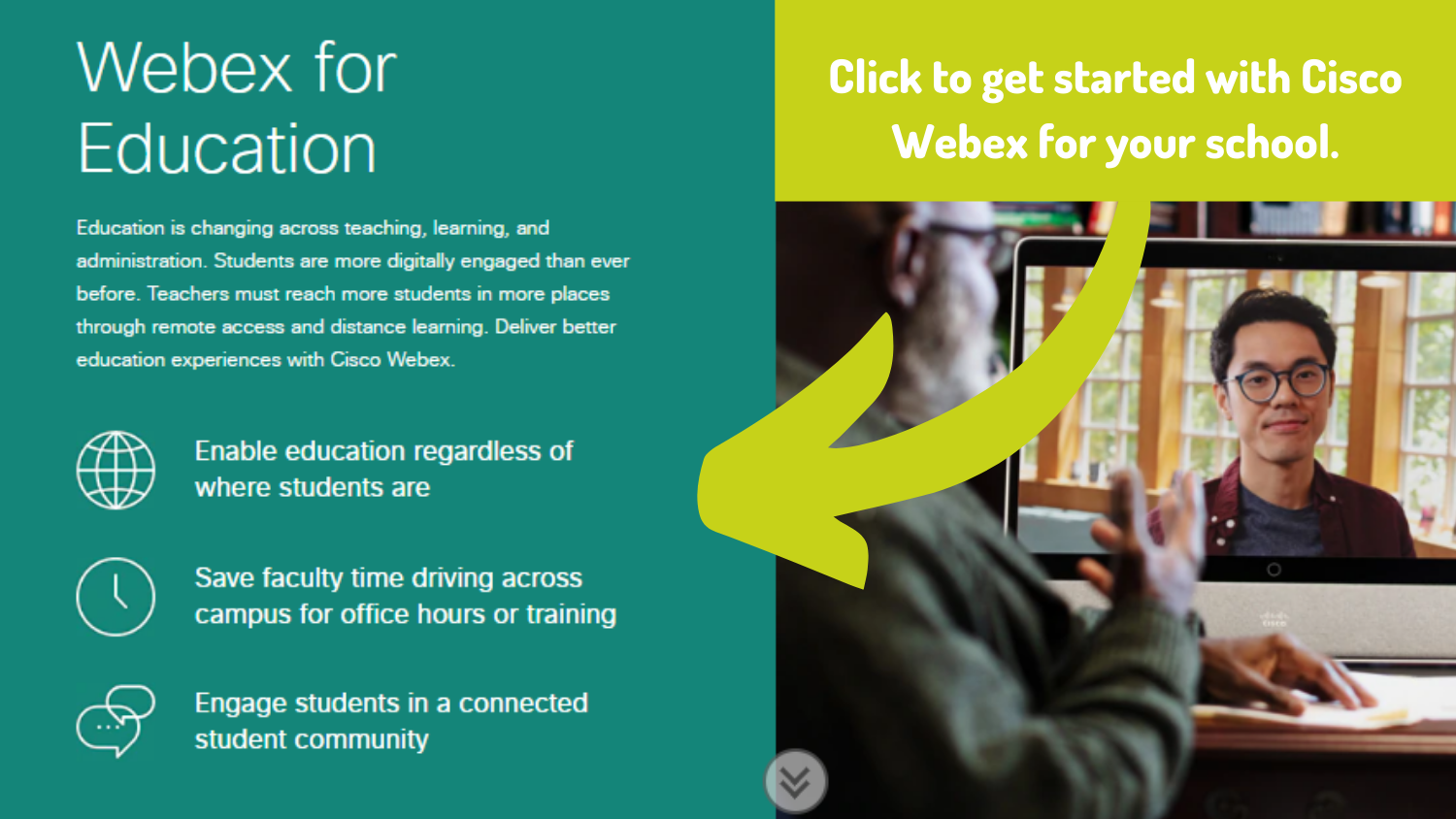June 9, 2020 by Siobhan Climer and John Irey
Only 60% U.S. students between the ages of 13 and 17 have engaged in distance learning, according to a recent Common Sense Media poll and reported by NPR news. In fact, 47% of public school students in the study say they have not attended a single virtual class.
Some of the reasons for this lackluster engagement in eLearning are based on resource distribution; many students and families do not have equitable access to high-speed internet and devices, like laptops and tablets. Studies conducted before the pandemic found that between 10 and 12 million students in the U.S. do not have edtech devices.
In addition, the general use and implementation of online learning tools has been a struggle. For the students who do attend their virtual classes, they might witness inappropriate demonstrations. In one of the more notorious examples of secure distance learning implementation, ‘zoombombing’ is now a well-defined term in edtech circles.

What Is ‘Zoombombing’?
‘Zoombombing’, first reported by The New York Times in March – and since the subject of reports by CNET, NPR, CNN, and the FBI – is a malicious highjacking of teleconferencing and online classroom platforms, specifically Zoom, which now has over 200 million users.
When Dr. Dennis Johnson, a first-generation African American college graduate from Chicago defended his dissertation in education at Long Beach State University over Zoom in late March, a hijacker joined the call and drew indecent images on the screen, according to multiple sources.
Dr. Johnson is not alone. The FBI notes that schools in particular are at risk of zoombombing, with incidents of hijackers drawing swastikas, sharing pornography, or even shouting a teacher’s home address coming in from across the nation.

Fall 2020 Looks Uncertain: Will Remote Learning Continue?
With Fall 2020 classes quickly approaching, school districts across the U.S. are developing contingency plans. Maryland State Superintendent of Schools Karen Salmon, for one, is focusing on distance learning plans.
“We’re not sure that [school building closures] is not something that we’re going to revisit in the fall or the winter. I’m really focusing much of our resources on the expansion and accountability wrapped around online learning and distance learning,” Salmon told state lawmakers, according to The Baltimore Sun and Edutopia.com.
Salmon is certainly not alone, with similar reports coming in from Skokie, Illinois; Louisville, Colorado; and Sacramento, California. Even in states where schools are beginning to reopen – like Montana – the instruction is more like targeted tutoring than classroom teaching and is primarily addressing the needs of students in advanced academic subjects at the middle and high school levels.

Schools Looking To Address Secure Distance Learning
 With the substandard performance of Zoom, school districts and IT teams are exploring alternative secure distance learning video conference platforms that put security at the forefront of development.
With the substandard performance of Zoom, school districts and IT teams are exploring alternative secure distance learning video conference platforms that put security at the forefront of development.
For teachers, the platform needs to offer certain fundamental functionalities. Some examples of key features include:
- Video conferencing
- Customizable privacy settings
- Screen-sharing
- Session recording
- Hand-raising
- Participation controls
- Survey tools
- Technical support
- Text chat
- Markup tools
- Whiteboarding
- Viewport changes
Security remains a top priority, especially given the concerns over zoombombing. With many students on IEPs or representing vulnerable populations, security and privacy is even more important.
The Most Secure Distance Learning Platforms On The Market
If security and functionality are the priorities, there are three prospective software platforms school districts can consider.
Cisco Webex Meetings
Cisco Webex is traditionally considered an enterprise-level platform, used by universities and 95% of Fortune 500 companies. While this has made it cost-prohibitive for school districts in the past, Cisco has completely shifted its model to accommodate schools during the crisis.
- Entry level price: Free
- Highest level of encryption and security controls
- Greatest number of teacher-requested features
- Greatest flexibility for shifting edtech trends
- Simple and effective tool for students and teachers
In addition to these high-level offerings, Cisco Webex for the classroom also includes:
- HD audio
- High-fidelity video
- Persistent virtual spaces
- 1:1 and group messaging
- Content and file sharing
- Integrates with most LMSs, including Moodle, Blackboard, Sakai, Canvas, & D2L
- Easily recorded and shared MP4 file formats
- Digital whiteboarding, co-editing, & interactive polling
Our recommendation: 5 out of 5
G2 recommendation: 10,657 reviews, 4.2 out of 5
Adobe Connect
Adobe Connect is a highly scalable product and includes a multi-layered security approach. While not commonly used in schools, it provides a relatively secure, scalable, and feature-rich web conferencing platform.
- Entry level price: Free
- Multi-layered security approach
- Customizable ‘pods’
- Personalized dashboard and branded virtual rooms
- Interactive sessions
Our recommendation: 4 out of 5
G2 recommendation: 552 reviews, 4.1 out of 5

Google Hangouts
The free version of Google Hangouts is one of the top video conferencing systems available; however, it only accommodates 20 people in the chat. For schools that have G-Suite, the solution may be more attractive. In addition, Google Hangouts came under fire this year for failing to include end-to-end encryption of its system – a fundamental security control.
- Entry level price: Free
- Some security controls
- Helpful training and support resources for educators
- Advanced features, such as meeting recordings and up to 250 participants
- Open-source community of educators
Our recommendation: 3.5 out of 5
G2 recommendation: 81 reviews (by educators), 4.4 out of 5

Ensure Secure Distance Learning For 2020-2021
For almost 20 years, Mindsight has helped school districts find communication and infrastructure solutions for their most difficult challenges. The uncertainty of next school year shouldn’t weigh on your shoulders alone.
Talk to one of our expert engineers to understand how technology can help support students, teachers, and their school communities in the coming year.
Like what you read?
Contact us today to discuss secure distance learning.
About Mindsight
Mindsight is industry recognized for delivering secure IT solutions and thought leadership that address your infrastructure and communications needs. Our engineers are expert level only – and they’re known as the most respected and valued engineering team based in Chicago, serving emerging to enterprise organizations around the globe. That’s why clients trust Mindsight as an extension of their IT team.
Visit us at http://www.gomindsight.com.
About The Authors
John Irey is a Principal Consultant at Mindsight focused on Cisco platforms. With nearly 20 years of experience in information technology, John has helped businesses of every size optimize the technology powering the contact center. He seeks to provide a consultative voice to contact center leaders and continues to focus on emerging technology, such as machine learning and artificial intelligence.
Siobhan Climer writes about technology trends in education, healthcare, and business. With over a decade of experience communicating complex concepts around everything from cybersecurity to neuroscience, Siobhan is an expert at breaking down technical and scientific principles so that everyone takes away valuable insights. When she’s not writing tech, she’s reading and writing fantasy, hiking, and exploring the world with her twin daughters. Find her on twitter @techtalksio.
How IT Directors Support Virtual Learning For Remote Students: An EdTech Report

